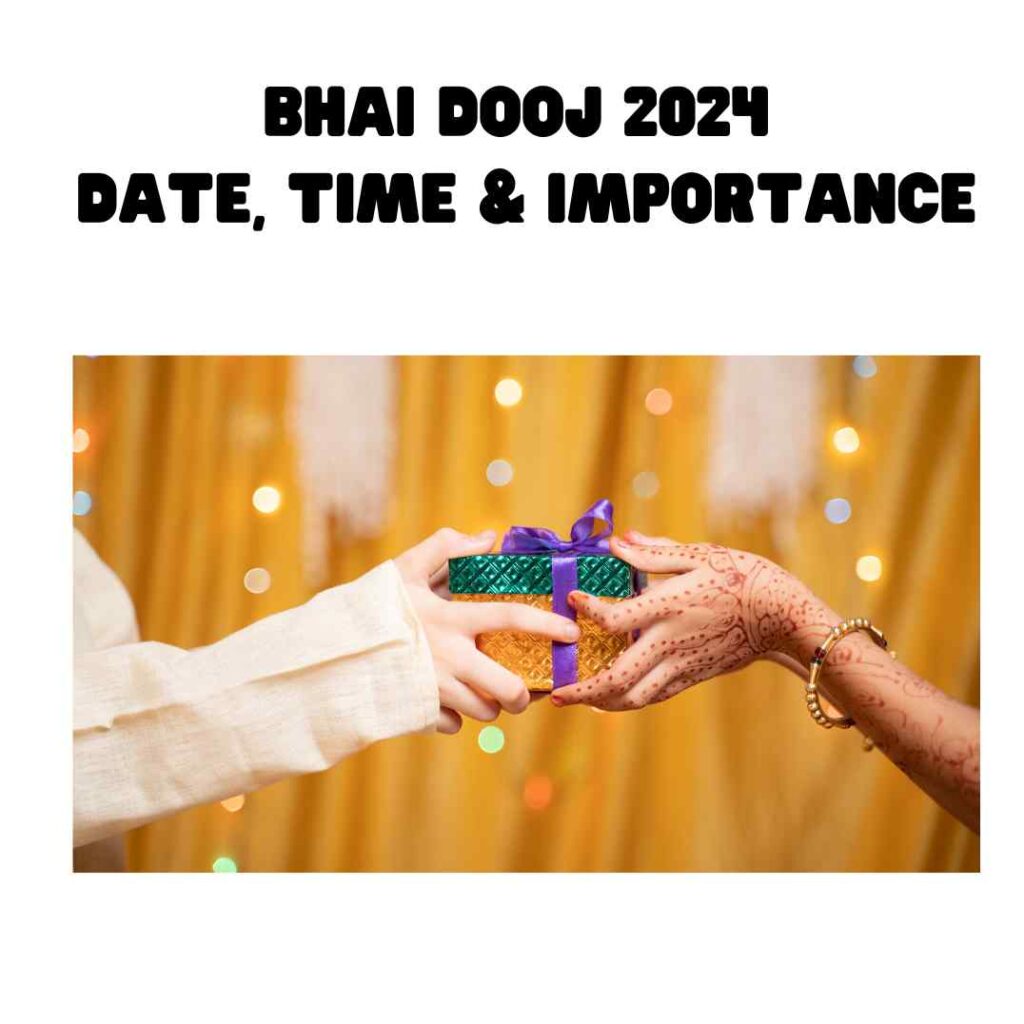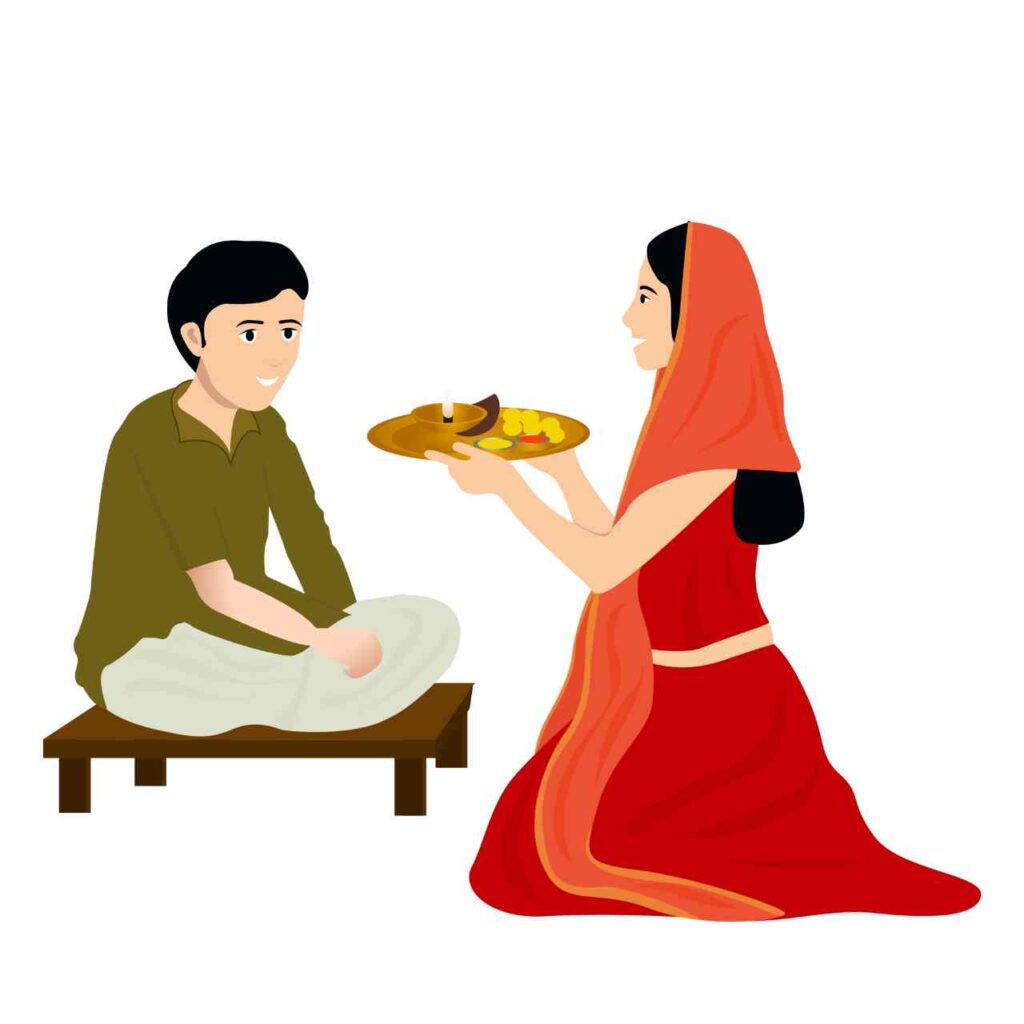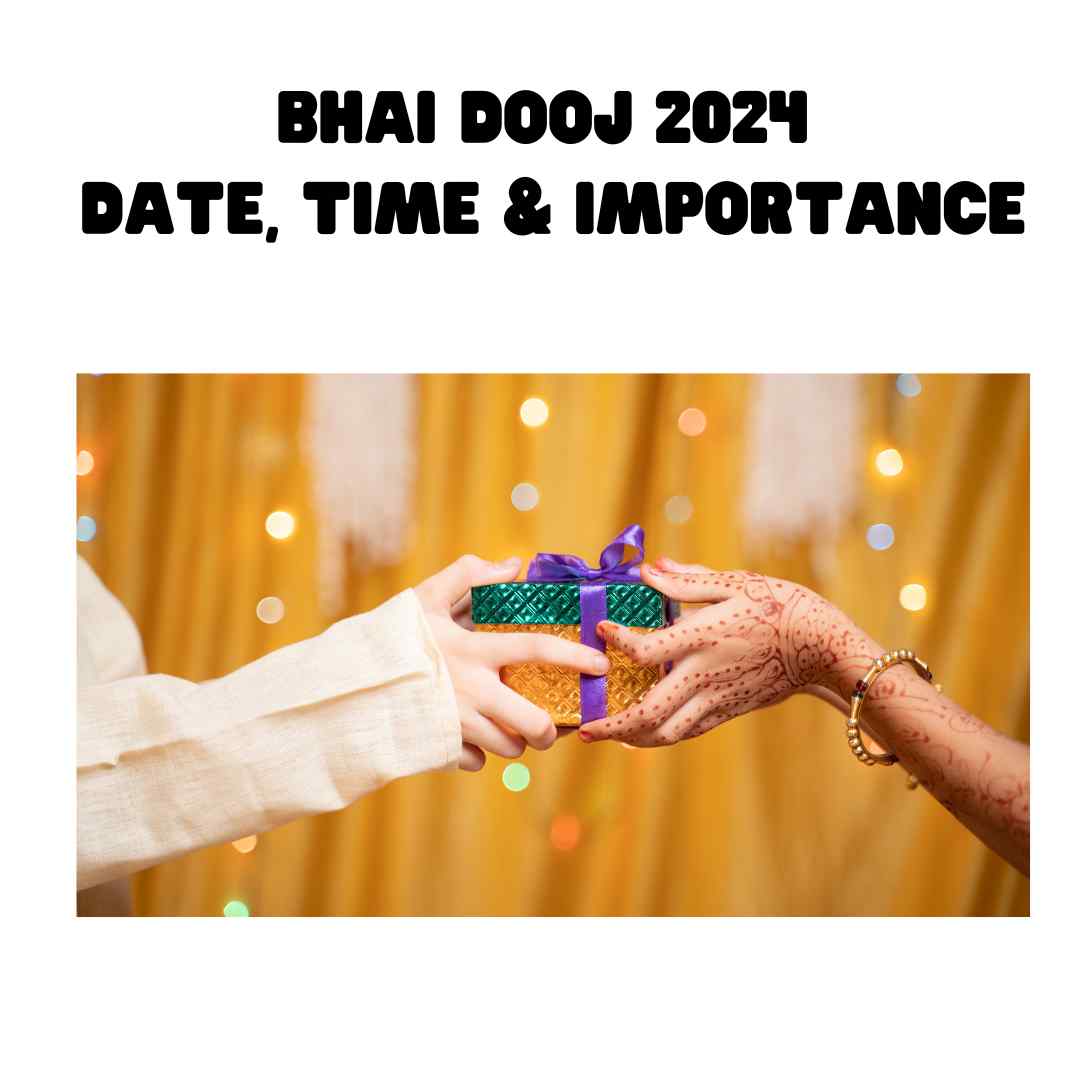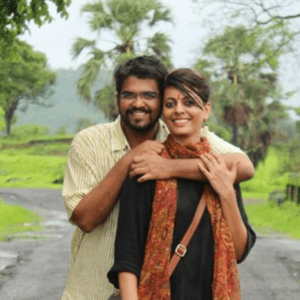Bhai Dooj is one of the most special festivals in India. It is a beautiful occasion celebrating the bond between brothers and sisters. It’s a day that brings families together, strengthens sibling love, and gives them a reason to spend precious time with each other. Like Raksha Bandhan, Bhai Dooj has a deep meaning, with traditions and rituals that have been passed down for centuries. This year, Bhai Dooj will be celebrated on a specific date and time, and understanding its importance helps us appreciate the festival even more.
Bhai Dooj 2024: Date and Time
In 2024, Bhai Dooj falls on Thursday, November 7. The festival follows closely after Diwali, which is celebrated on the new moon day (Amavasya) in the Hindu month of Kartika. Bhai Dooj takes place two days after Diwali, when the moon is in its waxing phase. It is celebrated on the Dwitiya (second day) of the Shukla Paksha (waxing phase of the moon) in Kartika month.
In Hindu customs, timing is important for every ritual. Bhai Dooj has its own “Shubh Muhurat,” which is an auspicious time for performing the rituals. In 2024, the Bhai Dooj Tika Muhurat will start in the morning at 1:31 p.m. and end at 3:50 p.m. This time frame is considered especially good for sisters to perform the tika ceremony for their brothers. Performing the rituals during this period is believed to bring blessings, prosperity, and protection.
The Story Behind Bhai Dooj

Every festival has a story behind it, and Bhai Dooj is no exception. The origin of Bhai Dooj comes from ancient tales and mythological beliefs. One of the most popular stories is about Lord Yama, the god of death, and his sister Yamuna. According to the story, Yamuna deeply loved her brother Yama and wished to see him often, but he was always busy with his duties. One day, Yama decided to visit her. She welcomed him with sweets, flowers, and a special tika on his forehead. Touched by her love and hospitality, Yama granted her a boon. Yamuna asked him to visit her every year, and she wanted him to bless all sisters who perform the tika ceremony for their brothers on that day. This day became known as Bhai Dooj, symbolizing a sister’s love and a brother’s protection.
Another story tells of Lord Krishna’s visit to his sister Subhadra after defeating the demon Narakasura. Subhadra welcomed him with sweets, flowers, and a tika on his forehead to celebrate his victory. This act of love between brother and sister also became a symbol of Bhai Dooj, celebrating the bond and the importance of sibling relationships.
Why Bhai Dooj Is Important
Bhai Dooj is more than just a festival; it is a day dedicated to celebrating the special connection between brothers and sisters. This festival is a reminder of the love, support, and protection siblings provide each other. It emphasizes the value of family, and even though siblings may be busy with their own lives, Bhai Dooj encourages them to take time out to reconnect.
For sisters, Bhai Dooj is a chance to show their affection and care for their brothers. In return, brothers give gifts to their sisters as a sign of appreciation and promise of protection. This tradition strengthens family bonds and teaches siblings to support each other through all phases of life.
In a fast-paced world, where everyone has busy lives and schedules, Bhai Dooj brings families together. It is a reminder of the blessings of having siblings and the joy of sharing childhood memories. Celebrating this festival strengthens family ties and reminds everyone of the warmth and comfort family brings.
The Bhai Dooj Rituals
The rituals of Bhai Dooj are simple yet full of meaning. On this day, sisters invite their brothers to their homes. They prepare a special place for the ceremony, often decorating it with flowers, sweets, and lights. The main part of the ceremony is the tika ritual. Sisters apply a red or vermillion tika on their brother’s forehead. This tika represents blessings, protection, and prosperity.
After the tika, the sister performs an aarti, circling a lamp in front of her brother’s face as a sign of respect and love. She prays for her brother’s happiness and well-being. Afterward, she offers sweets to her brother. Brothers, in return, give their sisters gifts, promising to protect and stand by them through all difficulties. These gifts can be anything meaningful, from sweets and clothes to something their sister has wished for.
Some families even include their children in the Bhai Dooj celebrations. This makes the day even more special, as children learn the importance of family and respect for siblings. The rituals also help the younger generation understand and appreciate the beauty of their cultural traditions.
Bhai Dooj in Different Parts of India
While Bhai Dooj is celebrated widely across India, it has different names and customs in various regions. In West Bengal, it is known as “Bhai Phonta.” Here, sisters observe fasts and perform a similar tika ritual but with different mantras and blessings. In Maharashtra and Goa, Bhai Dooj is celebrated as “Bhau Beej.” The customs remain similar, but the regional variations add unique flavors to the festival.
In some states, the festival is an even bigger celebration, with entire families coming together to mark the occasion. Different dishes are prepared, and siblings exchange laughter, stories, and memories. Each region has its own ways to celebrate, but the central theme of love, care, and protection remains the same.
Conclusion
Bhai Dooj is a beautiful festival that celebrates the essence of sibling love. It is a day when sisters pray for their brothers’ happiness, health, and protection, while brothers promise to look after their sisters. The significance of Bhai Dooj goes beyond the rituals—it is about family, memories, and the comfort of knowing that someone is always there for you.
As Bhai Dooj 2024 approaches, families prepare to come together and honor this special bond. It is a reminder that no matter where life takes us, the love between brothers and sisters is timeless.

















What do you think?
It is nice to know your opinion. Leave a comment.